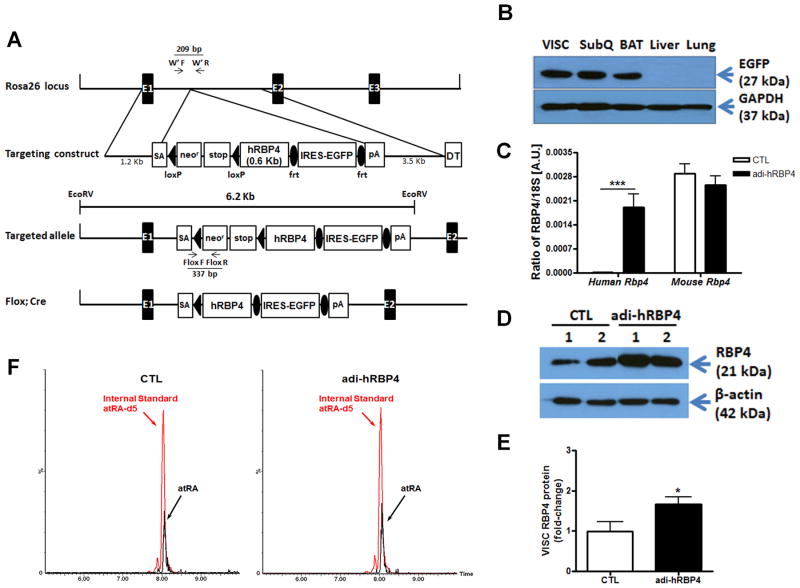Figure 1. Targeting strategy of the endogenous ROSA26 hRBP4 knock-in mice and properties of the adipose tissue-specific hRBP4 (adi-hRBP4) transgenic mice.
(A) Schematic representation for the recombinant hRBP4 alleles. The arrows indicate the positions of the PCR primers used for genotyping. EX 1-3, ROSA26 exons; SA, splice acceptor; DT, diphtheria toxin. (B) Immunoblots showing EGFP protein expression in visceral (VISC), subcutaneous (SubQ) and brown adipose tissue (BAT) but not in liver or lung of adi-hRBP4 mice. (C) Relative mRNA expression of human and mouse RBP4 in visceral fat (VISC) was determined by qPCR in adi-hRBP4 and littermate control (CTL) mice. ***, P < 0.005 versus control. (D) Immunoblots showing total RBP4 (mRBP4 + hRBP4) protein expression in visceral fat (VISC) from 2 adi-hRBP4 and 2 littermate control (CTL) mice. (E) Mean visceral fat (VISC) total RBP4 (mRBP4 + hRBP4) protein expression as a ratio to β actin for scanned immunoblots. *, P < 0.05 versus control. (F) LC/MS/MS profiles for all-trans-retinoic acid (atRA) present in visceral fat from chow-fed adi-hRBP4 and littermate control (CTL) mice. All-trans-retinoic acid was detected and quantified using the multiple reaction monitoring mode (MRM) employing the following transitions: all-trans-retinoic acid, m/z 301.16→123.00; and the internal standard penta-deuterated all-trans-retinoic acid (atRA-d5), m/z 306.15→127.03.

